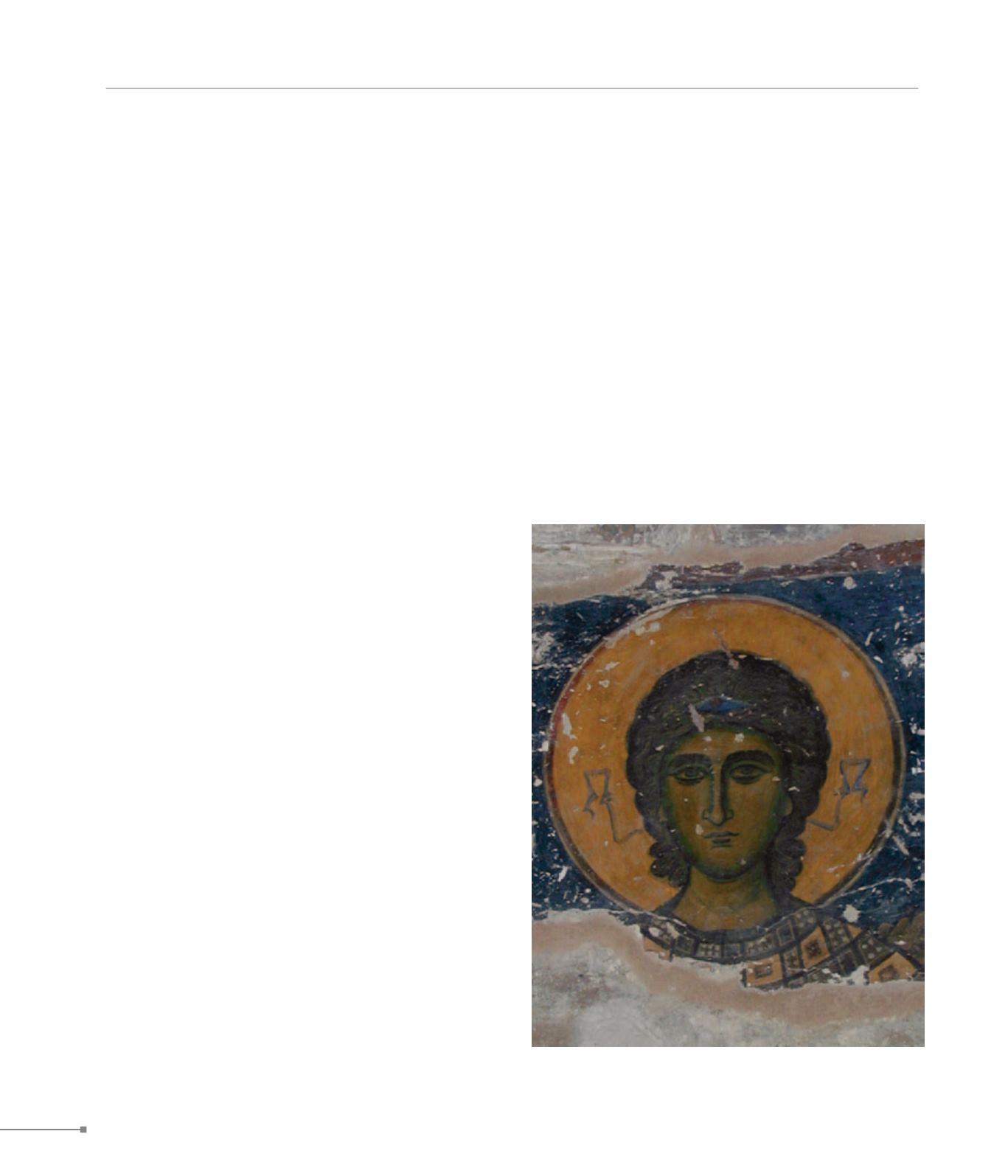
Monastery of Gonia.
Episkopi Kisamou.
CRETE
238
337. Episkopi Kisamou, Archangel Michael, wall painting of the third layer
(Επισκοπή Κισάμου, Μιχαήλ Αρχάγγελος, τοιχογραφία γ’ στρώματος)
into monasteries in the 15th and 16th c. were established at
isolated locations in the inaccessible inland territory. The re-
peatedly reconstructed catholicon of Saint George’s monas-
tery, near Menies, was originally built in the mid-14th c.; the
representation of a prelate dates from the same period. High-
quality work by a folk artist decorates the eastern section of
the aisleless catholicon of the Saint Paul monastery (late 14th
c.) in a cove at Cape Spatha. In the W extension of the church
are wall-paintings of the mid-15th c. In a cistern in the small
church of Saint John at Gkionas (16th c.) have been found
vessels and coins of the 12th c.
333.
Monastery of Gonia.
The monastery of Gonia, N of Kolympari, was built in the first
half of the 17th c., when it was transferred from a neighbouring
elevation. From the original monastery survives a barrel-vault-
ed, single-nave catholicon. The E of the structure was built
and decorated with wall-paintings in the mid-14th c, while the
W section was frescoed in the second half of the 13th c. In the
following century one more aisle was added to the S.
334.
Spilia.
SW of Spilia is the barrel-vaulted, single-nave church of Pana-
gia with wall-paintings of the second half of the 14th c.
335.
Vasilopoulo.
Outside Vasilopoulo lies the restored church of the Soter.
Fragments of wall-painting decoration from the first half of the
15th c. survive in situ (other, removed fragments are exhibited
today at the Byzantine and Christian Museum of Athens and at
the Chania Byzantine and Post-Byzantine Collection).
336.
Vouvas.
In the centre of Vouvas stands the twin-naved church of the
Soter. The earliest E section of the N aisle retains wall-paint-
ings of the mid-14th c. At the settlement of Vraskas is the dec-
orated church of Aghia Paraskevi.
337.
Episkopi Kisamou.
On sloping ground outside the village of Kato Episkopi Kisamou
is the unusual Early Christian church of Archangel Michael. It
is a centrally planned, rectangular structure arranged around
a large dome with stepped exterior and breast-shaped inte-
rior. W of the church is a vaulted narthex and atrium, while on
a higher level the complex closes with a series of rectangular
spaces. In the N pastophory is the built table of the prothesis
in front of the conch on the E wall. A cruciform baptismal font is
incorporated in the mosaic floor of the S pastophory. An even
larger cruciform baptismal font, today located in the narthex,
seems to have been in the circular space of the church origi-
nally. The church features mosaic floors that can be dated to
the second half of the 6th c. In the second Byzantine period in
Crete the church served as the cathedral of Episkopi Kisamou;
this function was later transferred inland. Fragments of wall-
paintings survive in four or five layers, of which the originals of


